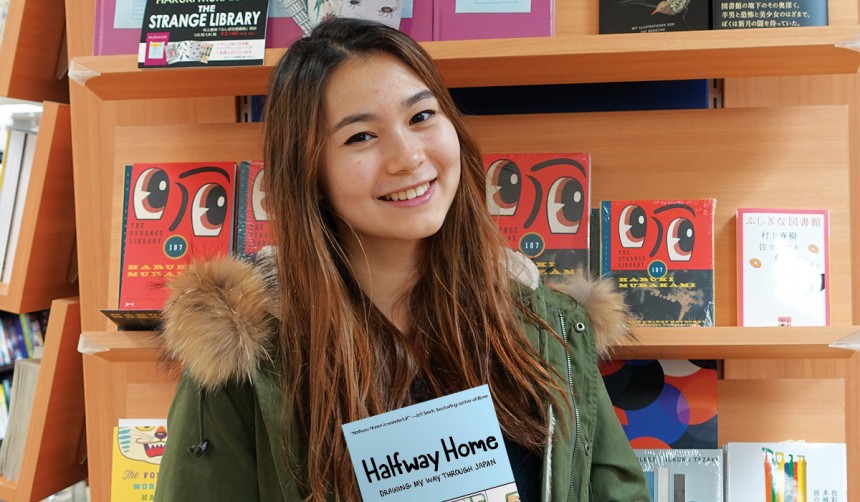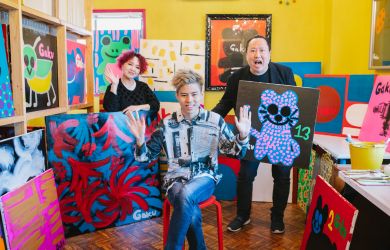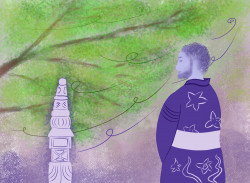
February 9, 2015
Drawing Travels
Christine Mari Inzer illustrates her Japan experience
In 2013, Christine Mari Inzer boarded a plane that took the young author and illustrator from her U.S. home state of Connecticut to her other home, Japan. What had started as a visit with her grandparents soon evolved into an eight-week journey for the then-15-year-old to reconnect with her Japanese roots and discover more of Japanese culture.
Rather than keeping diary entries, Inzer chronicled her adventures in her maternal home country as a series of charming comics that encapsulate the experience. The comics now make up the graphic novel Halfway Home: Drawing my Way through Japan—her first book published—which has earned praise from other authors, such as Hope Larson, Lucy Knisley and Robert Whiting.
Now 17, Inzer talks to Metropolis about cultural identity, art and home.
How did your decision to document your journey as a graphic novel come about?
I feel as though drawing my experience was less of a decision and more of something that came naturally to me. Art is the most natural medium to express myself. Drawing is one of my biggest passions, and I’ve been documenting my experiences with art since elementary school; so it only felt right that I would make Halfway Home a graphic novel.
When did you discover your passion for drawing?
I have been drawing since the day I learned how to hold a pencil. It’s just something that I have always loved to do. I guess I was lucky to discover it at such a young age.
What were your first impressions upon returning to Japan as a teenager?
When I returned to Japan, one of my first impressions was how good the food was. From fast food chains to convenience stores to ramen shops—everything I tasted was absolutely delicious, and all for a shockingly low price. Back in America, most people don’t trust cheap food, with the assumption that it’s probably poorly made. Japan is completely different.
People with multiple ethnicities identify themselves in various ways. When talking about your background, how do you identify yourself as to other people?
While I identify myself as Asian American, when asked about my background, I usually just tell people that my mom is Japanese and my dad is American. This is to avoid any confusion as many Asian Americans have parents who are both Asian.
How do you stay in touch with Japanese culture while in the United States?
My parents do a really good job of keeping Japanese culture relevant in our home, whether it’s through our monthly trips to the Japanese supermarket or showing us old Japanese films. Our bookshelves are full of books on Japan and our kitchen has a drawer for chopsticks, so I think Japan is a good part of the Inzer identity. My mom also cooks Japanese food regularly, which is a blessing.
What does “home” mean to you?
For me, a home is where you feel completely comfortable and content, as if you could spend the rest of your life there. I feel as much at home at my grandmother’s house in Kashiwa as I do at my real home in Connecticut.
What can we expect from you next?
Right now, as a high school senior, my main priority is getting into a good college and I haven’t had much time to think about new art or writing. However, now that I’ve published my first book I feel a lot more confident about the process. And I’ve received lots of positive feedback for Halfway Home, so I’m definitely excited to write another book. Stay tuned!
Halfway Home: Drawing my Way through Japan is available in paperback and for Kindle at Amazon, and in paperback at Kinokuniya Bookstore as well as Barnes & Nobles, Goodreads and IndieBound online. http://christinemari.com







